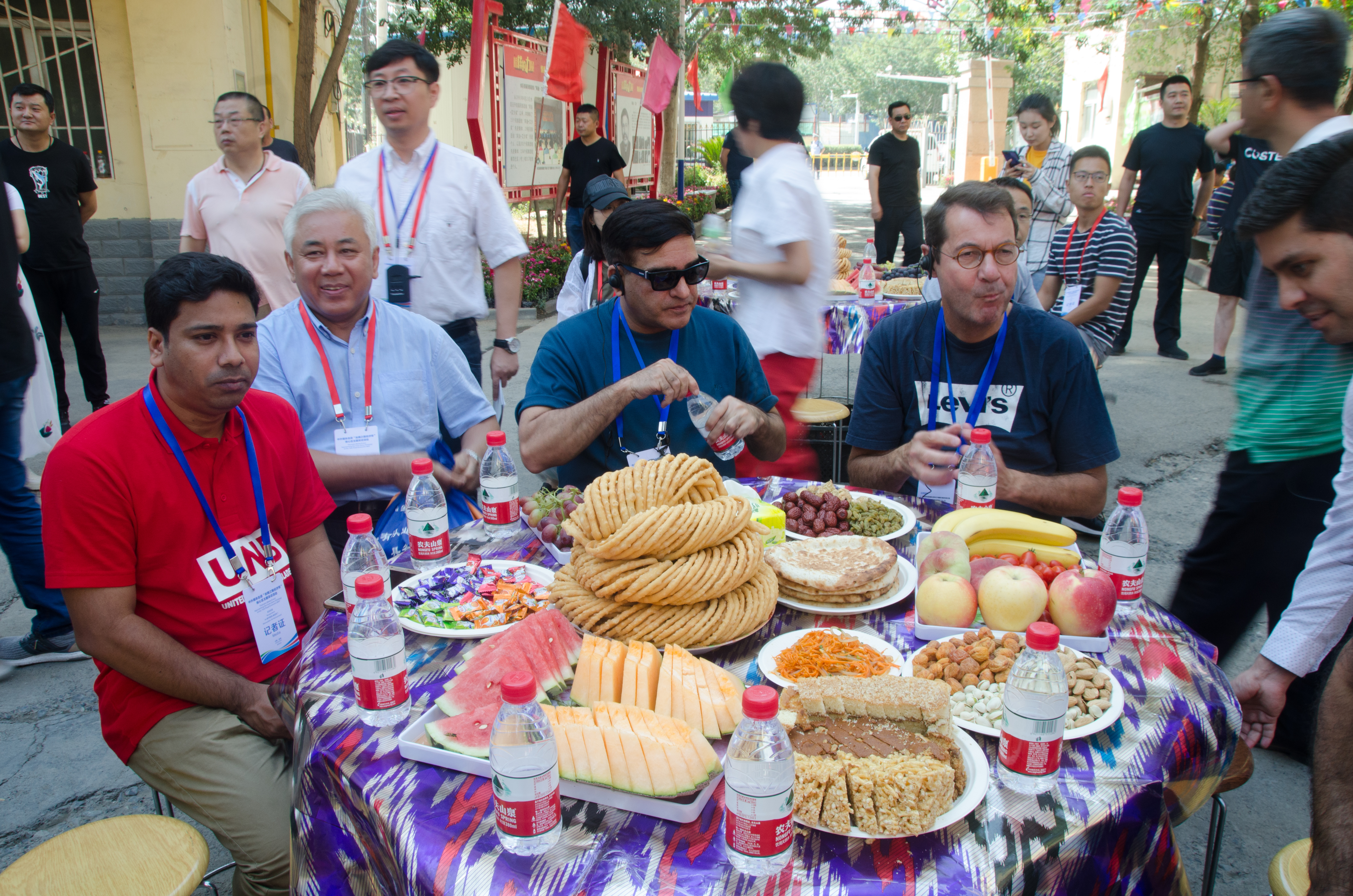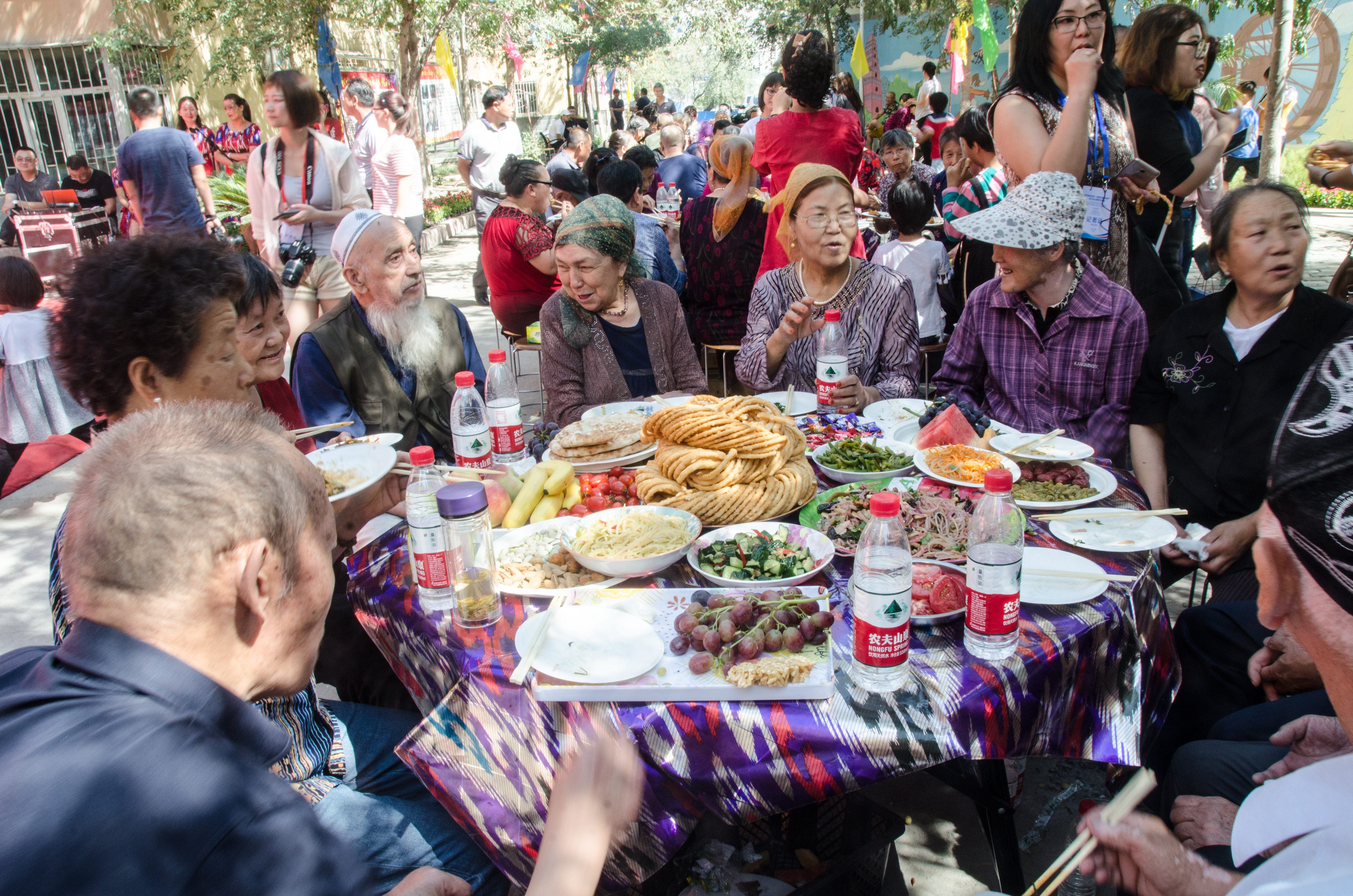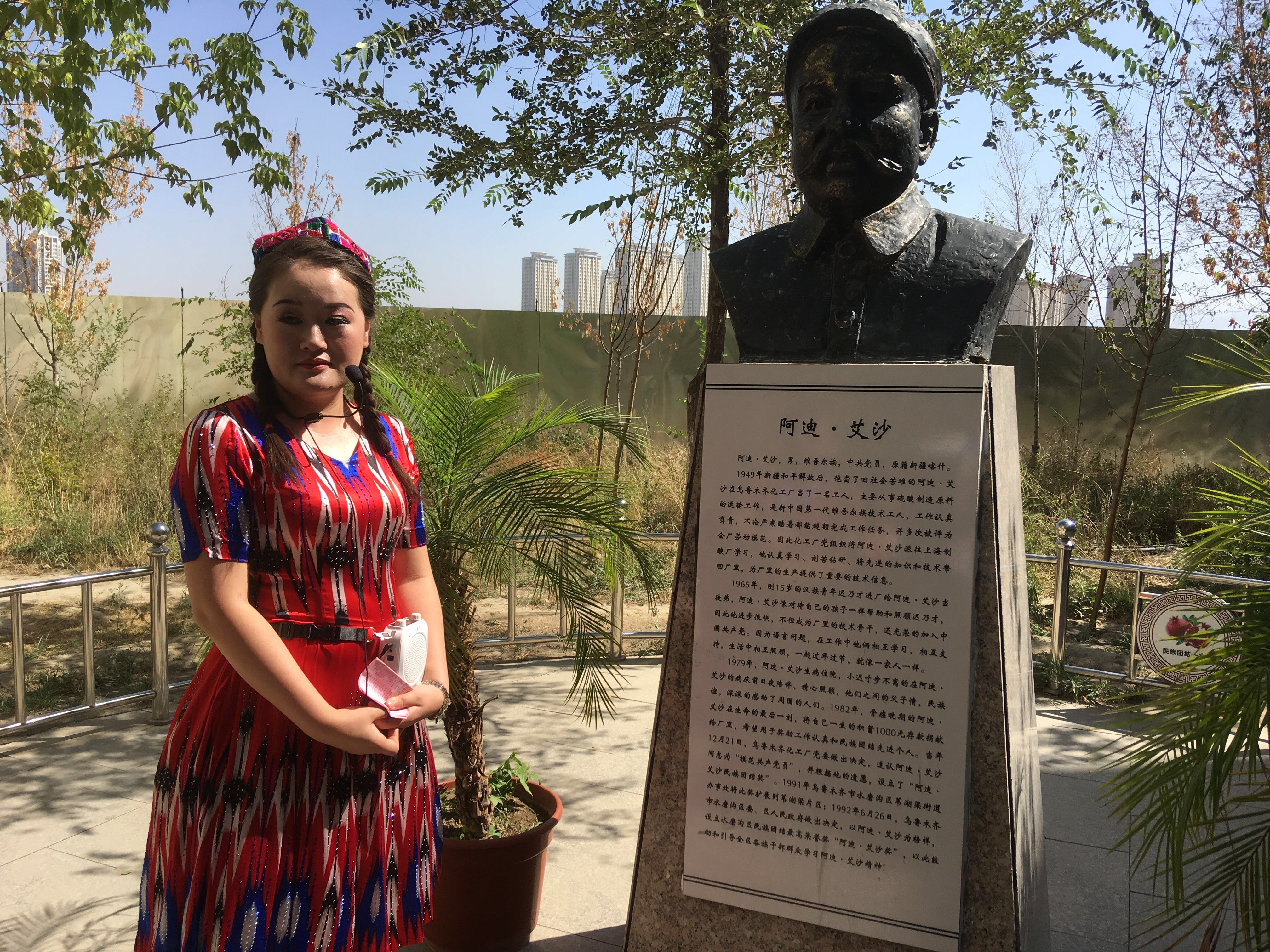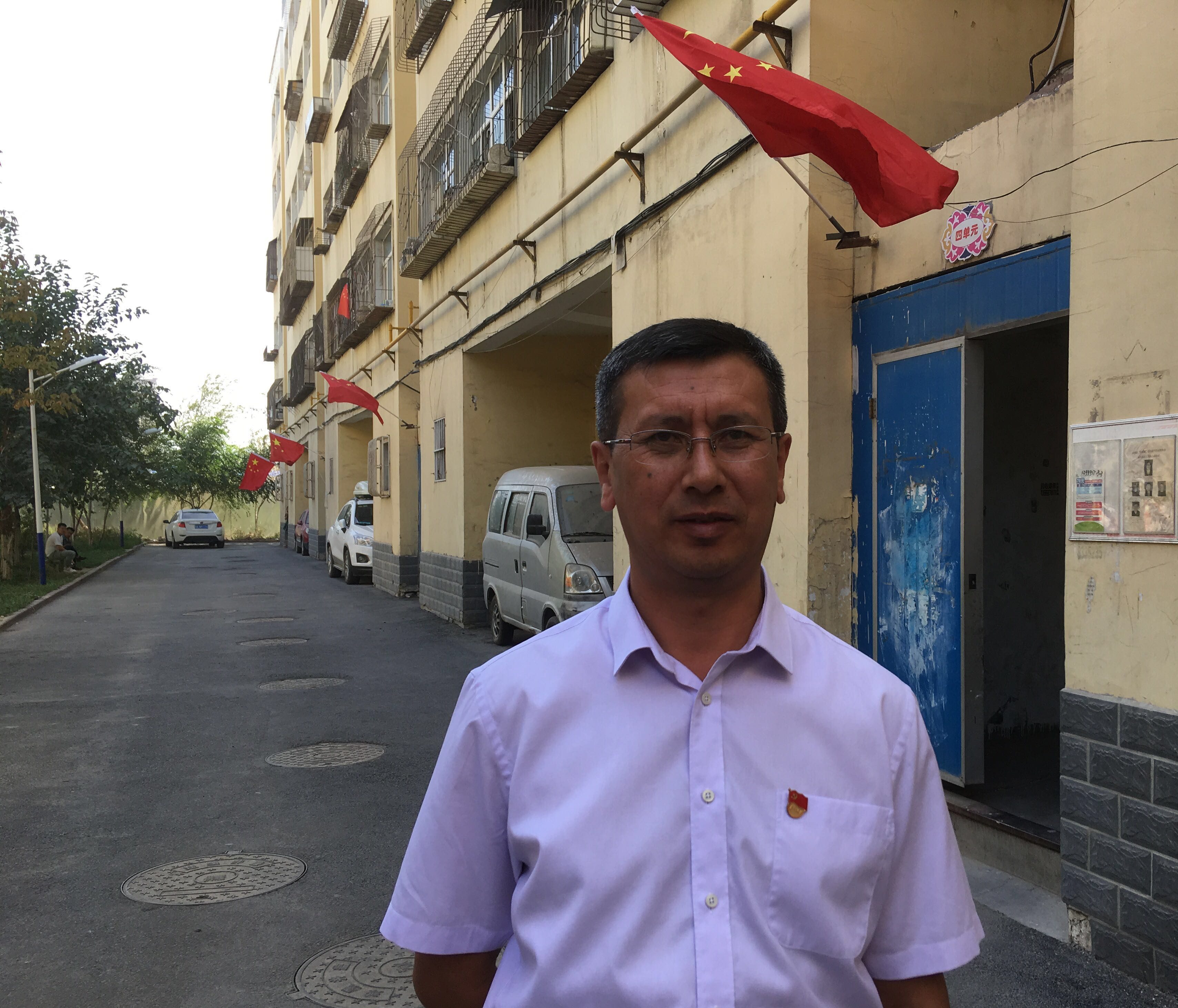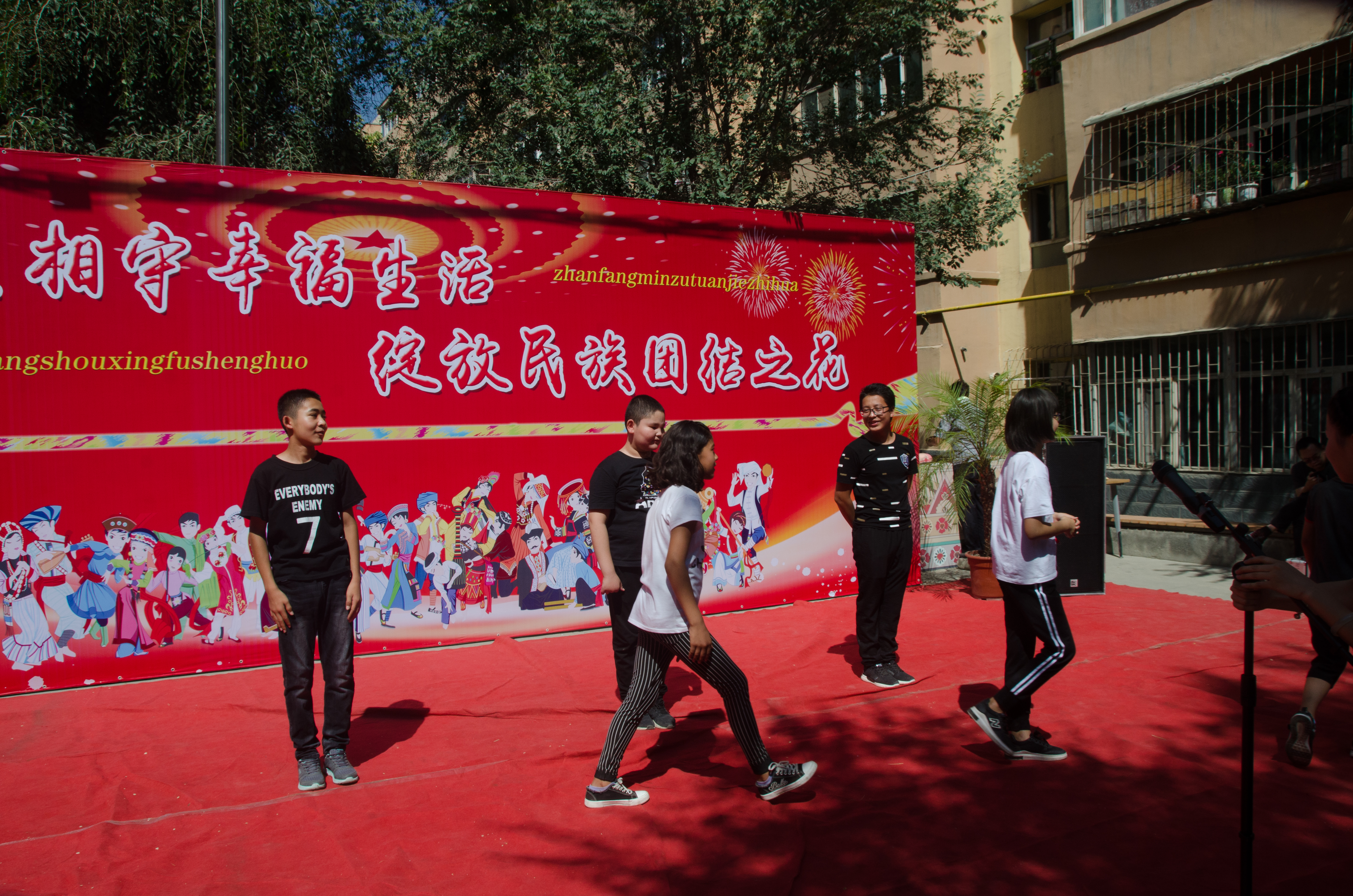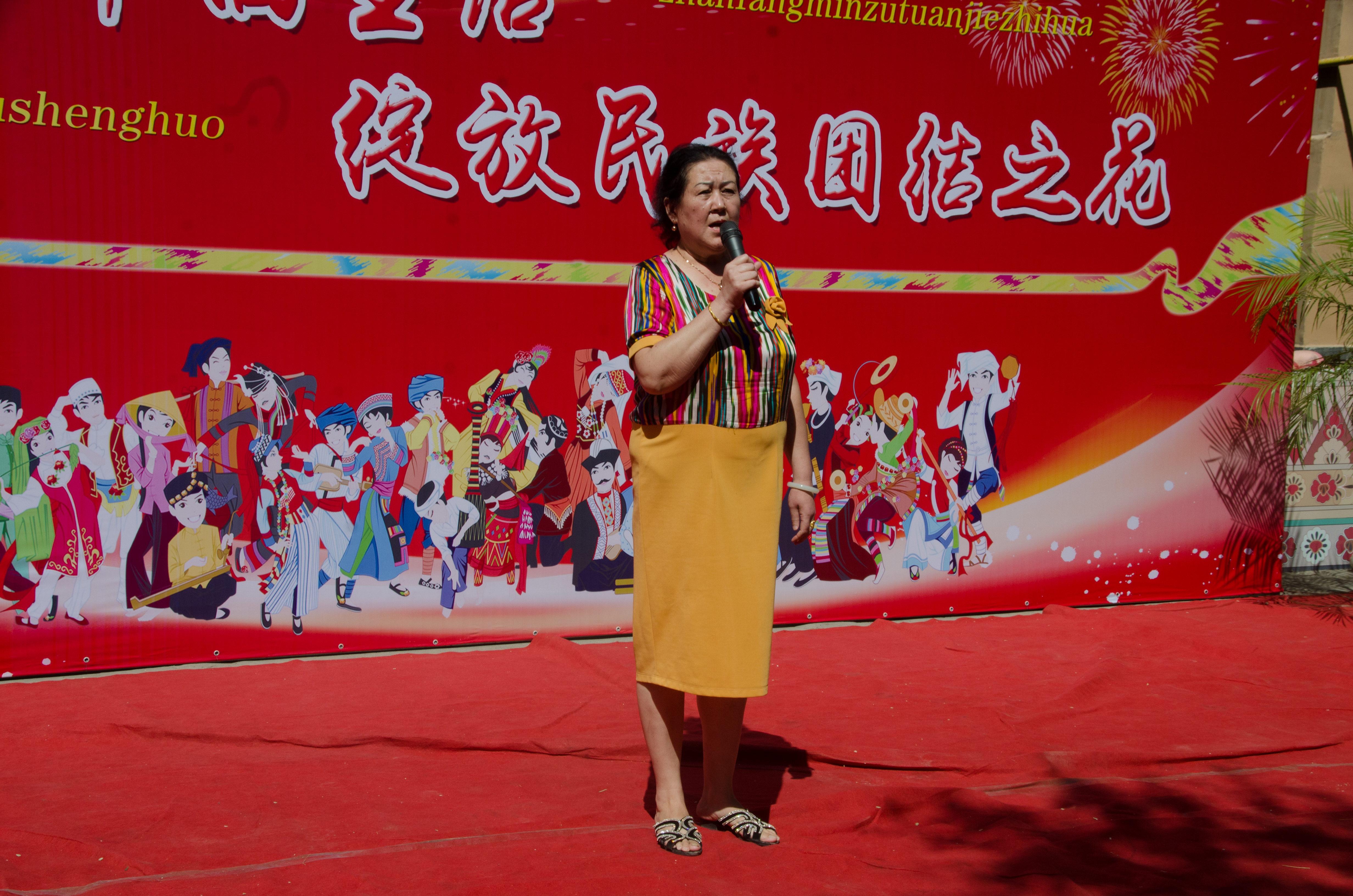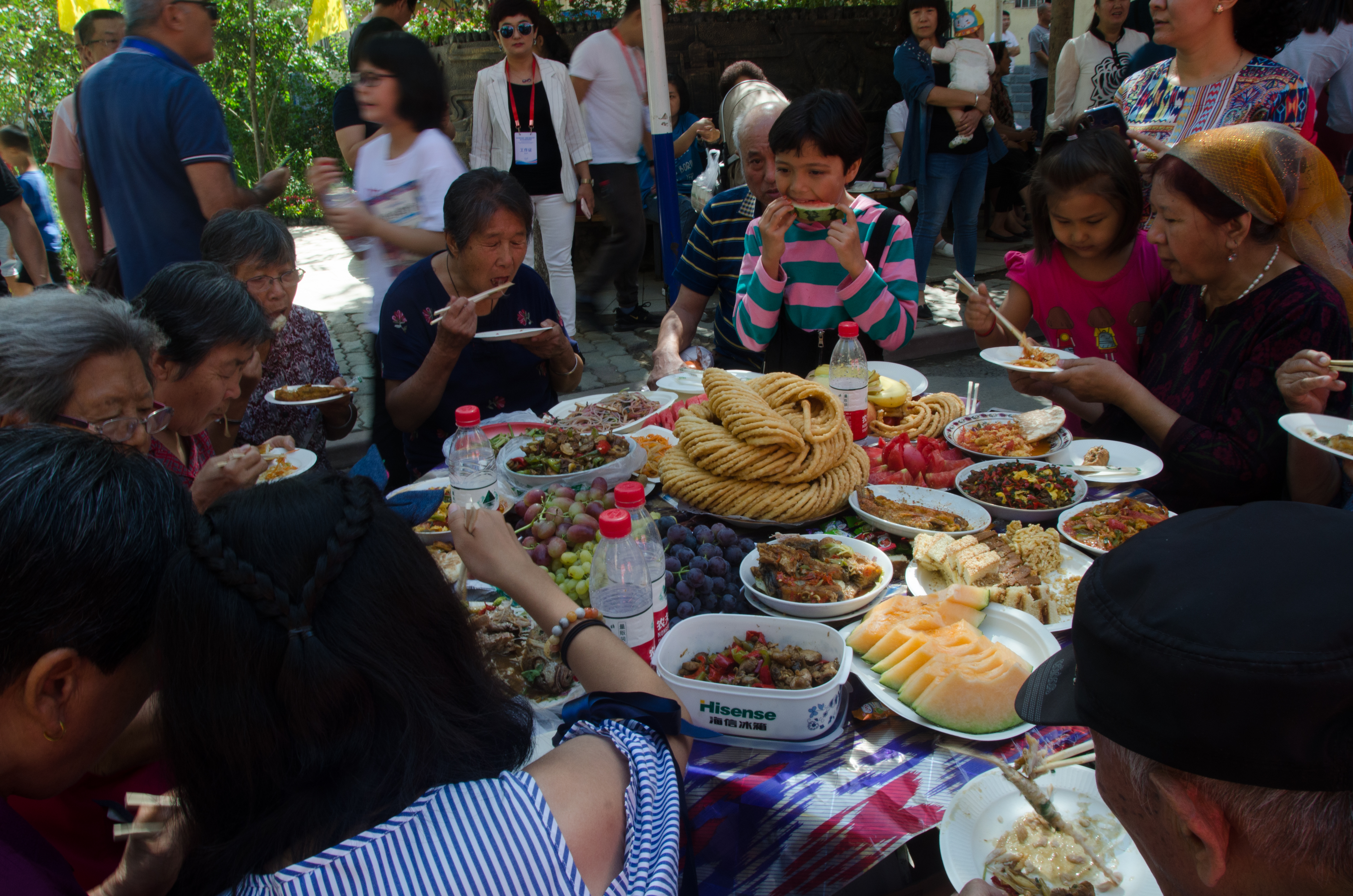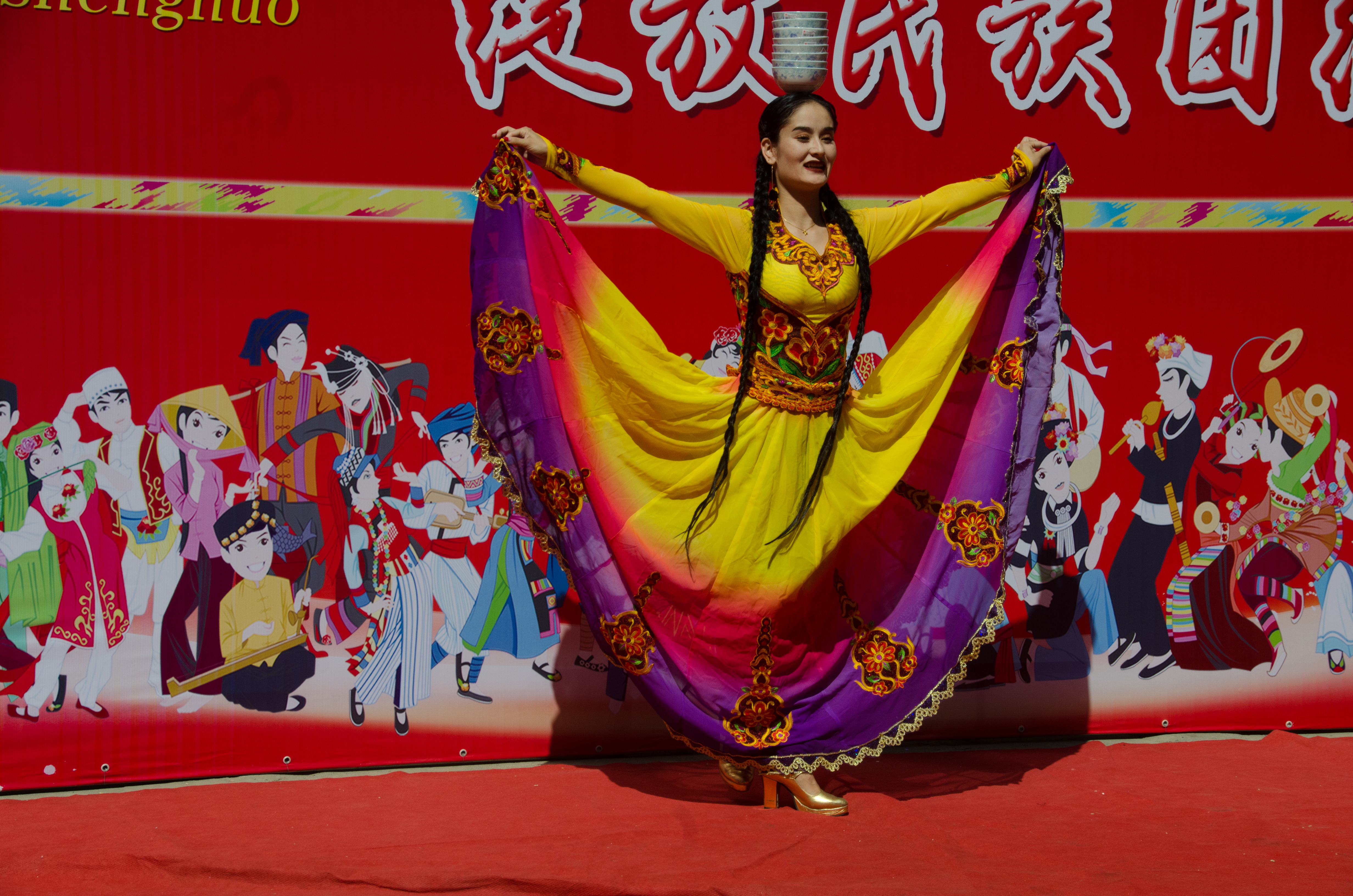By Xuefei Chen Axelsson
Stockholm, Oct. 17(GreenPost) — On August 26th, over 30 Chinese and foreign media reporters walked into the Urumqi Qidaowan District Management Committee‘s Emerging Community National Unity Courtyard to participate in the national unity family activities.
The reporters interviewed the community head and people of various ethnic groups, visited the community and ethnic families, and had lunch with the people of all ethnic groups. They witnessed the laughter and customs of the people in the national compound and tasted the delicious food with ethnic characteristics in Xinjiang.
When we got off the bus, the reporter saw the lanterns here, and there were several large tables on the street in the yard. People from all walks of life sat together. The table is full of food, hand-picked rice, fried noodles, watermelon, Honung, grapes and other foods. The watermelon here is really big and sweet.
The tour guide said that there was a true story of Adi Aisha. Adi Aisha was a worker at the Urumqi Chemical Plant, mainly engaged in the transportation of raw materials for the manufacturing of sulfuric acid. No matter it was windy or rainy, rain or snow, all the year round, he was uninterrupted, and the task was overfulfilled every month. He had been appraised as a model worker in the factory many times, and he had become an example for young people in the chemical plant at that time. Before his death, he donated his lifelong savings of 1,000 yuan (estimated to the current 120 US dollars) to the factory to reward good comrades who are active in work and national unity. Adi Aisha was not just an ordinary person, but carrying a kind of spirit. Over the past 32 years since his death, he has become a spiritual symbol for carrying forward the purpose of national unity. He made the “Adi Aisha” national unity flower blossom in Shuimogou area and passed on from generation to generation. This was also the best example set by an old party member to establish a national unity family.
In order to commemorate Adi Aisha, people have erected his statue here.
According to the member of the CPPCC National Committee and the first secretary, Mudan Tiemuer Niyazi, the community was established in the 1980s. Inhabited by three ethnic groups, the Uygur, the Han and the Hui, the party organizations play an important role here, and closely unite the various nationalities. They take the local party organization as the core, engage in various activities or learning, and promote the unity of everyone. They also set up cooperatives. At the cooperative, everyone weave handicrafts together. Through activities, people are closely united. Another important part is the National Unity Courtyard. “We must pass on the spirit of Adi Aisha,” said Tiemuer Niyazi.
Why is this unity particularly important? Mudan Tiemuer Niyazi said that Xinjiang is a multi-ethnic area, and the unity of all ethnic groups in Xinjiang is our lifeline. From the history to the present, all ethnic groups must live together and make progress together. Without national unity, there will be no stability in Xinjiang, and national unity is what we must do. Without national unity, there is no harmonious society in Xinjiang. All ethnic groups are equal, living together and united together. It doesn’t mean that Xinjiang was not united before, we have always been united. The July.5 incident in 2009 was such an event that the “three forces” outside the country incited to undermine our unity and peace. This incident was the one that the people of all ethnic groups in Xinjiang were opposed to.
On August 26th, it was the last day of the National Festival “Kurban festival” in Xinjiang. The folks in the community seemed to be born musical, singing and dancing, old and young, they were all very happy to celebrate the festival this way.
Not only do they sing traditional songs, children also dance modern tap dancing.
Mier Guli. Anne sang a beautiful “Singing a Song to the Party”. This song has been sung for decades, and now it is still so beautiful, especially the singing of Mier Guli, very moving.
“Hulunbeier Prairie”, a Mongolian song makes more people feel endless joy, harmony and peace. Singing can convey strong feelings and love. This was the life of the Xinjiang people. They are as free and secure as they can. What the reporter feels here is to uphold the leadership of the party. At the same time, the party members go deep into the grassroots and the masses. The party members and masses are all very happy. Especially for the elderly, when reporters interviewed them, they all said that life is very happy now. In their later years, they were well cared for by the party and the government.
The lunch food is from every family that brings a dish to eat here. It may also be that everyone can bring a program if possible. In short, this kind of cultural activity in the open-air plaza of the community is actually what has been going on in China since the liberation. It is a cultural entertainment that many people like because it is affordable. You don’t need to go to the theater to experience the culture. As one style of culture activity, this cultural atmosphere is deeply rooted in the hearts of the people.
In fact, in order to strengthen national unity, in recent years, Xinjiang has formulated and implemented a series of new policies to promote national unity. One of them is the policy of national unity and family. For example, regional units have recently sent people to the farmers and herdsmen’s homes in southern Xinjiang to give gifts, such as giving children’s toys, showers, tables and chairs, etc., to visit there five or six times a year. To enhance mutual understanding, just as the eastern region helps the western region, the provincial capitals want to help brothers and sisters in other regions. This kind of participation, communication and exchange is a form of democracy, nationality, and for people’s livelihood. It embodies mutual help, but not mutual dismantling.
Tasting Xinjiang’s hand-picked rice, Hamimelon and large watermelon, you can feel the sunshine here is sweet, the fruit is sweet, and the people live happily.
This interview was a field interview conducted by the Chinese and foreign media organized by the State Council Information Office into the core area of the Xinjiang Silk Road Economic Belt.
It is understood that Xinjiang covers an area of more than 1.66 million square kilometers, with four of Sweden’s land area. The total population living in this area is 22 million, which is equivalent to the total population of two Sweden. There are 56 ethnic groups living in the vast land of Xinjiang. Among them, there are 13 ethnic groups living here for generations. They are Uygur, Han, Kazak, Hui, Mongolian, Kirgiz, Xibo, Manchurian, Tajik, Uzbek, Daur, Tatar and Russian.
Since ancient times, Xinjiang has been a multi-ethnic area and a region of cultural resources. Xinjiang is known as the Western Region. It is a long corridor of ethnic migration and history. It is a holy place for multicultural exchanges, an integral part of Chinese culture, and an all-night place for the ancient Silk Road. In 60 BC, the Western Han Dynasty unified the Western Region and established the Western Regions, which marked the official entry of the Xinjiang region into the Chinese territory. In 1884, the central government established the province in Xinjiang, and took the meaning of newly recovered homeland. Xinjiang officially replaced the ancient name of “Western Region”. For thousands of years, the people of all ethnic groups in Xinjiang have worked together on this land to create a splendid civilization. Historical and cultural sites, cultural relics reflect the cultural characteristics of different ethnic groups and witnessed the development of Xinjiang’s history and the changes of various national cultures. Buddhism, Islam, Christianity, Catholicism, Orthodoxism, Taoism and many other religions coexist here. Eastern and Western cultures blend here. The four ancient civilizations converge here. The Chinese national master, Ji Xianlin, said that in the world’s long history and far-reaching influence, there are only four cultural systems: ancient Greece, China, India, and Islam. There is no fifth, and the place where these four cultures meet is only in Xinjiang in China. There is no second. Therefore, Xinjiang is a unique place in the world.
Xinjiang has 18 national first-class ports, not only relying on China’s domestic large market with a population of 1.3 billion, but also facing the large channel of material circulation, personnel exchanges and cultural integration that also has 1.3 billion Central and South-West Asian markets. Xinjiang is the core area of the “Silk Road” economic belt. Through the China-European freight train, it is expected to become a transportation hub connecting Central and South-West Asia and even Europe. The future will play a more important role and continue to write a new era of Silk Road civilization. The foreign media participating in this interview include NHK from Japan,Green Post of Sweden, Echo News of Belgium, Toro News of Afghanistan, Gikabar National News Agency of Kyrgyzstan, United Arab Emirates of Bangladesh, NET TV of Indonesia India, the mainstream media of India and Egypt, Pakistan, Malaysia, Turkey and Uzbekistan media. They are journalists from countries along the Silk Road Economic Belt and come to explore the mysteries of the core area of the Silk Road Economic Belt.
Photo /text Xuefei Chen Axelsson

